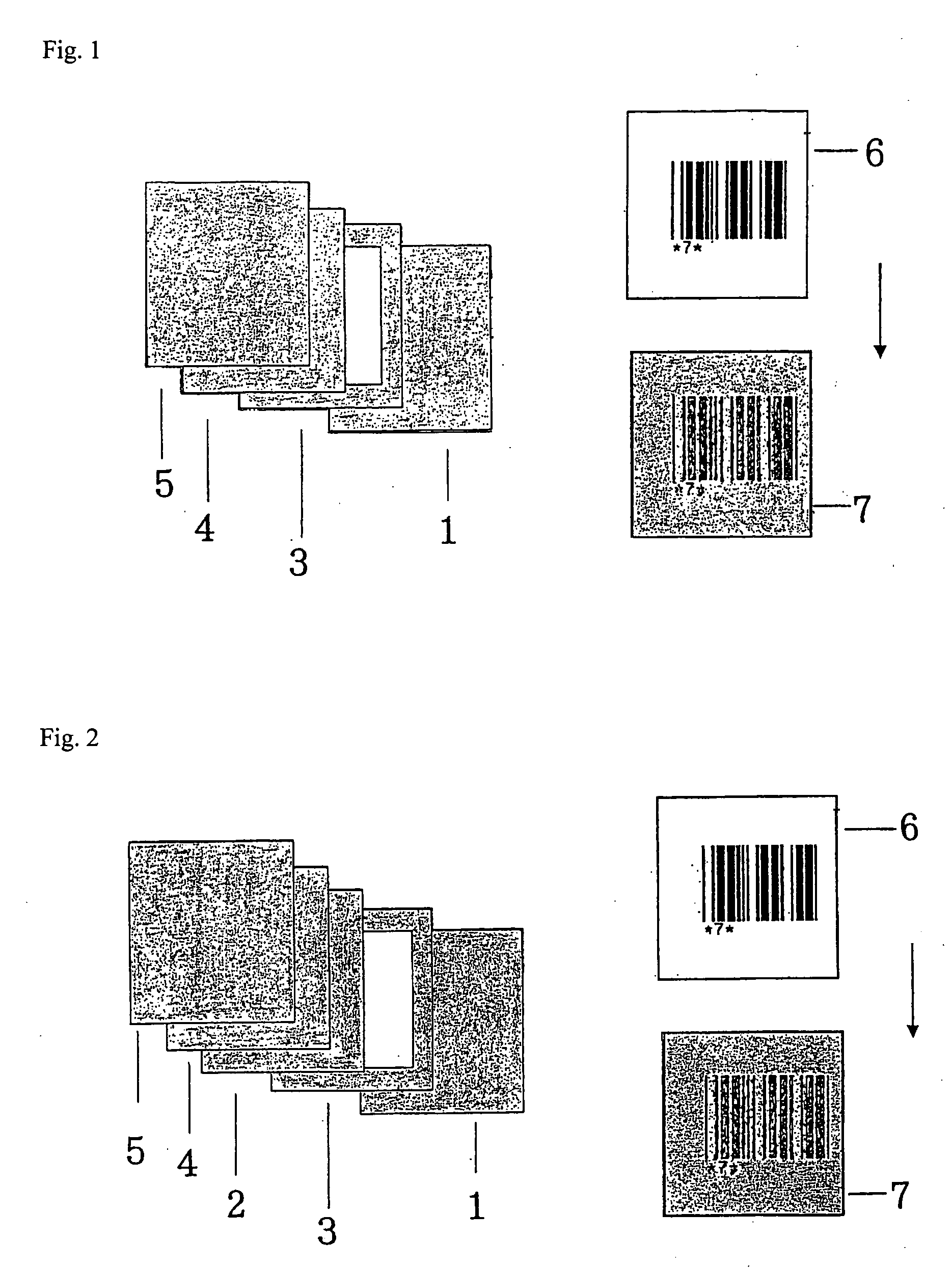Temperature indicating display device
a display device and temperature technology, applied in the direction of identification means, instruments, heat measurement, etc., can solve the problems of large fluctuations in temperature, insufficient safety standards, and large food safety problems
- Summary
- Abstract
- Description
- Claims
- Application Information
AI Technical Summary
Benefits of technology
Problems solved by technology
Method used
Image
Examples
example 1
[0122] Oleic acid was used as a temperature detecting agent. Oleic acid was heated to 30 to 40° C., and it was then quenched with liquid nitrogen and cut into a thin film form to obtain a temperature indicating agent. Oleic acid in a liquid state can be quenched into a thin film form to obtain a temperature indicating agent in a thin film form. The temperature indicating agent had a critical temperature (predetermined temperature) of about 110° C.
[0123] The resulting temperature detecting agent having a thickness of about 0.5 mm was placed in a frame having a concave to obtain a separator. A layer having information recorded therein containing a transparent plastic film (information record holding layer) having a barcode (information recording film layer) printed thereon was disposed on the separator in such a manner that the information recording film layer was closely in contact with the temperature detecting agent layer.
[0124] The entire of the temperature indicating display de...
example 2
[0126] A temperature detecting agent layer was produced in the same manner as in Example 1.
[0127] The resulting temperature detecting agent having a thickness of about 0.5 mm was placed in a frame having a concave to obtain a separator, on which paper having a thickness of about 0.5 mm was placed to form a diffusion layer, and a layer having information recorded therein containing a transparent plastic film (information record holding layer) having a barcode (information recording film layer) printed thereon was disposed on the diffusion layer in such a manner that the information recording film layer was closely in contact with the diffusion layer.
[0128] The entire of the temperature indicating display device thus obtained was sealed with a laminating material (polypropylene).
[0129] When the display device was allowed to stand at room temperature (about 20° C.) for 20 minutes, the information of the barcode could not be visually recognized.
example 3
[0130] 10 g of oleic acid was heated to 30 to 40° C., with which 10 mL of water was mixed, followed by sufficiently agitating, and the mixture was further agitated with ultrasonic wave. The mixed solution was quenched with liquid nitrogen to produce minute solids of oleic acid in water. The mixture was gradually heated to obtain a solid dispersion liquid having only water melted, to which a small amount of alkaline substance was added to obtain a temperature detecting agent. The temperature detecting agent was sealed with a transparent film to obtain a temperature detecting agent layer having a thickness of about 0.5 mm. The temperature detecting agent had a critical temperature (predetermined temperature) of about 10° C. The resulting temperature detecting agent layer having a thickness of about 0.5 mm was placed in a frame to obtain a separator. A layer having information recorded therein containing a transparent plastic film (information record holding layer) having a barcode (in...
PUM
 Login to View More
Login to View More Abstract
Description
Claims
Application Information
 Login to View More
Login to View More - R&D
- Intellectual Property
- Life Sciences
- Materials
- Tech Scout
- Unparalleled Data Quality
- Higher Quality Content
- 60% Fewer Hallucinations
Browse by: Latest US Patents, China's latest patents, Technical Efficacy Thesaurus, Application Domain, Technology Topic, Popular Technical Reports.
© 2025 PatSnap. All rights reserved.Legal|Privacy policy|Modern Slavery Act Transparency Statement|Sitemap|About US| Contact US: help@patsnap.com



